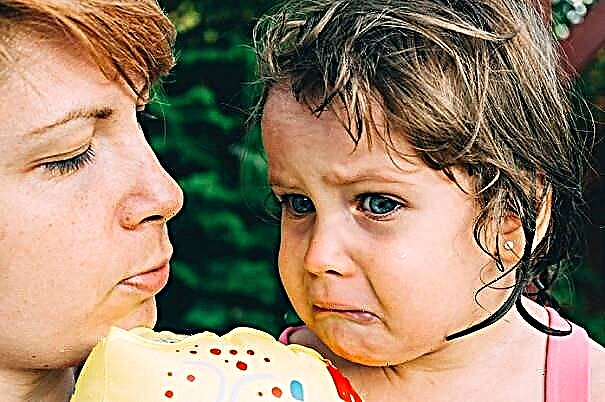Infectious, congenital and mechanical factors provoke intestinal obstruction in a child; symptoms (rare emptying, bulky bowel movements, difficulty or pain in bowel movements) are especially pronounced in boys under one year of age, less often in adolescents and adults. Constipation begins acutely, requires urgent diagnosis of urgent pathology.

Low intestinal permeability in a child
Causes of intestinal obstruction in newborns
When considering the causes of intestinal obstruction (Latin ileus, "ileus"), congenital and acquired forms of the disease should be distinguished. The heredity of the disease is due to:
- abnormal development of organs in the womb (annular form of the pancreas, aberrant vessel), provoking compression of the intestine;
- congenital atresia and duodenal stenosis;
- blockage of the small intestine with viscous meconium;
- congenital defects that cause rotation and attachment of the mesentery;
- congenital megacolon, provoking low partial intestinal obstruction.
Acquired intestinal obstruction in newborns is more often manifested with improper nutrition, depleted in fiber and nutrients, and low water intake. Additional risk factors include stress, obesity, underweight newborns, cerebral palsy, and disruption of the normal pace of development. Sick children also have NEC, tumors, body poisoning, metabolic disorders, helminthic invasion, the introduction of one part of the intestine into another.
Important! Particular attention should be paid to duodenal atresia, chromosomal abnormalities occur in 30-67% of children suffering from intestinal obstruction.
Classification of intestinal obstruction in infants
The principles of intussusception treatment are determined by the type and causes of the pathology. Stomach obstruction in newborns is classified according to the following criteria:
- Bowel obstruction level: complete, partial;
- Development mechanism: dynamic and mechanical;
- Reasons for appearance: congenital, acquired;
- The form of impassable zones: simple, restrained, closed loop;
- Type of vascular compression: adhesive, compressed by a loop, tumor;
- Main symptoms: acute, chronic, recurrent;
- Localization: small intestine, large intestine.
Note! If there is intestinal obstruction in infants, the symptoms are congenital, in older children - acquired. Pathology develops with dynamic or mechanical impact.

Ileus species
Dynamic obstruction occurs against the background of malfunctions of the motility of the intestinal system, there are no mechanical barriers to the movement of feces. Mechanical obstruction is formed when the intestinal lumen is blocked by foreign objects, accumulation of solid feces, adhesions.
Important! Adhesive intussusception occurs most frequently in infants.
Partial obstruction is a consequence of the narrowing of the lumen, which slows down the movement of intestinal contents. Complete blockage, respectively, is due to swelling or adhesions.
Signs of the disease and its diagnosis
The symptoms of intestinal obstruction in children under one year old, regardless of the cause of the disease, are the same:
- accumulation of air, gas in the abdominal cavity;
- the progression of weakness, drowsiness, apathy;
- fast pulse;
- pallor of the skin;
- cold sweat.
Signs of the disease appear with complete or partial intestinal obstruction. The key signal of the disease is acute pain, reminiscent of contractions, accompanied by intestinal contractions. With the development of intussusception, pain is localized at the site of blockage, later spreads throughout the abdomen. Obstruction that appears at the top of the intestine is accompanied by frequent vomiting after separate feeding attempts. Also, a blockage in the intestines provokes constipation. Some patients suffer from diarrhea and bleeding.
Forecasts for treatment in children under one year old
The prognosis is determined by the timing of the patient's admission to the surgical department. On arrival later than 12 hours from the onset of the attack, doctors predict a high likelihood of circulatory disorders in the strangulated part of the intestine. Early diagnosis and timely surgery exclude the possibility of death from intussusception.
Treatment methods
Intestinal obstruction is treated with conservative and surgical methods. With early admission of infants to the clinic, intussusception is solved conservatively. With a Richardson balloon or rubber bulb, air is introduced into the rectum. Control the situation with an X-ray. Moving through the large intestine, pressurized air straightens parts of the intestine. Then the baby is given a saline solution to drink, which increases the contrast of the intestine on the x-ray.

Examination of an infant with suspected intestinal pathology
If intestinal necrosis is detected on the roentgenogram, the damaged areas must be removed. The operation is also performed when the baby is admitted to the hospital late. Doctors open the anterior abdominal wall, straighten the invaginate. The presence of dead sections of the intestine indicates the need to cut out damaged tissue, connect two healthy parts of the intestine to each other.
Lifestyle and nutrition during treatment
Disease prevention requires the timely and correct introduction of complementary foods. It is recommended to add new food to the infant's diet at 4-6 months, the food should be liquid and soft (the presence of fruits, vegetables, cereals is required), the volume of food should be increased gradually, control the stool, and promptly treat disorders of the digestive tract (tumors, polyps).
Feeding infants subjected to disinvagination (expansion of invaginate) is carried out 6 hours after surgery. Babies are given 20-30 ml of expressed milk every 2 hours. At the end of the day, the volume of milk consumed by children is increased.
Older patients are given warm tea 6 hours after surgery. The next day, doctors prescribe a liquid diet, a week later, the usual diet is allowed. After excision of the dead part of the intestine, children from the second day begin to drink a limited amount of liquid.
Consequences and complications of the disease
A neglected form of pathology threatens with necrosis of the intestinal area (pathology in the people can be called necrosis), the inevitable development of peritonitis of the abdominal cavity. The problem is signaled by cramps in the abdomen, frequent vomiting, intestinal obstruction, body temperature up to 40 ° C, frequent heartbeat.
Important! During surgical intervention, one should beware of suppuration of the operated wound. If the incision becomes red, swollen and painful, and your body temperature rises, you should see a doctor immediately.

The introduction of one part of the intestine into the lumen of another
Proper nutrition, timely detection and treatment of tumors will prevent the negative consequences of intestinal ileus.



